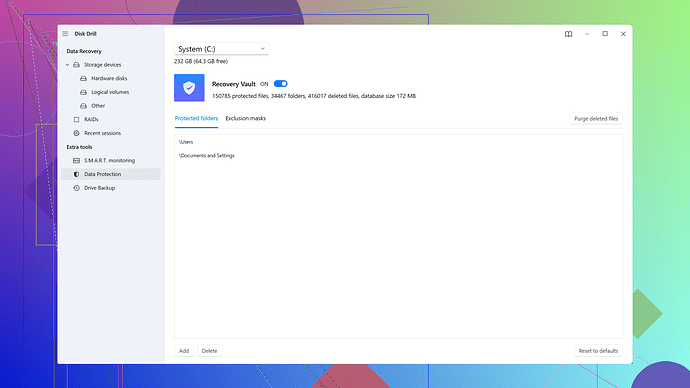If your hard disk is making strange noises and some files are becoming inaccessible, that typically indicates physical damage, which can be a bit more tricky to deal with than logical errors.
First thing’s first, backup immediately whatever data you still can! Access your drive as gently as possible and try to copy all your important files to a safe location. In cases where the drive’s about to die, you don’t wanna waste time on repair tools before securing any remaining data.
For software solutions, there’s quite a few options; I’ll list some of the most reliable ones here:
1. Disk Drill
: This is one of my go-tos. Disk Drill is excellent for data recovery and works well on both Windows and macOS. It has an intuitive interface and can recover data even from damaged partitions. Here’s the link for more details: Disk Drill Data Recovery Software2. CrystalDiskInfo: While this tool won’t repair your disk, it can provide detailed information about its health. It’s great for diagnosing issues, and it’s free. You might see error reports like bad sectors or other malfunctioning components, which gives a clear picture of what’s going wrong.
3. HD Tune: Similar to CrystalDiskInfo, HD Tune offers a health scan, bad sector reports, and basic testing for the drive. Though, its interface is a bit less user-friendly.
4. SpinRite: This is a more advanced tool that’s specifically designed to repair and recover hard drives. It can work on drives that are failing due to bad sectors. It’s not free, but a lot of tech enthusiasts swear by it.
5. TestDisk: If the issue is with lost partitions, TestDisk is an open-source tool that’s quite powerful in recovering partitions and making non-booting disks bootable again.
If these tools don’t seem to help, it’s possible the damage is too severe for software tools to fix. Here’s what you can do next:
Physical Damage Handling:
-
Professional Data Recovery Services: If your data is extremely critical, professional data recovery services have specialized equipment to handle heavily damaged disks. They’re expensive, though.
-
DIY Repairs: There’s a method where you carefully open the disk in a clean environment to check if the read/write heads are stuck that some risk-takers try, but I wouldn’t recommend it unless you’re experienced; it’s risky and often can make things worse.
Prevent Future Issues:
- Always have regular backups in place (Local and Cloud)
- Use decent quality power supply units to avoid electric fluctuations
- Keep your system clean from malware
Noises and Immediate Shutting Down:
Finally, if the drive makes clicking or grinding noises, shut it down! Those noises often mean mechanical failure, and continued use might kill any chance of data recovery.
Hope this helps, and best of luck with your repair!
